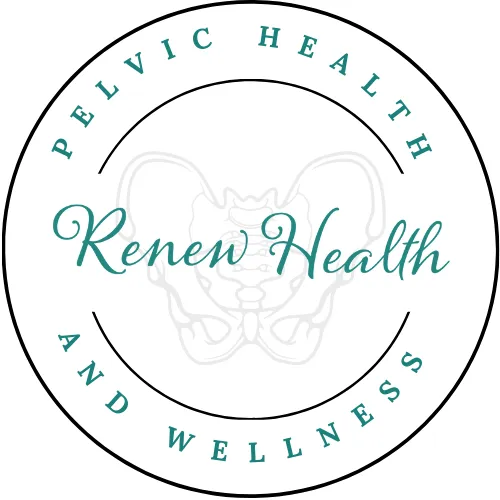Renew Health Blog 💭
Practical Pelvic Floor Thoughts from Your Experts at Renew Health

Back Packs & Back Pain- How Load Impacts Pelvic Stability
How Carrying a Backpack Impacts Your Pelvic Floor, Back & Core Stability
Whether you're hitting the trails with a hydration pack or chasing toddlers while carrying a diaper bag, the way we carry load matters. That’s especially true when it comes to your pelvic floor, deep core, and spine.
At Renew Health, we hear this all the time:
“My back starts aching halfway through a hike.”
“I leak more when I’m wearing a heavy backpack.”
“Carrying my toddler wrecks my hips.”
These aren’t random issues—they’re often signs of imbalanced load management and a core system that’s struggling to support the demand.
🎒 How Backpacks Affect the Pelvic Floor and Spine
When you add a pack—whether it's a hiking backpack, toddler on your hip, or grocery bags across the parking lot—your body naturally makes compensations:
Your pelvis may tilt forward or tuck under, which changes how your core and glutes activate.
You might start to grip with your low back or clench your pelvic floor in an attempt to stabilize.
Your breathing shifts, often becoming shallow and rib-cage dominant (which leads to more pressure on the pelvic floor and spine).
This combo leads to low back tension, pelvic floor symptoms, and inefficient movement patterns—especially over long durations.
✅ Smart Tips for Carrying Weight Safely (for Hikers & Moms Alike)
1. Pack High & Close to Your Center of Mass
Keep heavier items higher up in the backpack and snug to your body. When weight hangs too low or far from your spine, your core has to work harder to stabilize.
2. Use Both Straps (We’re Talking to You, Crossbody Bag Lovers)
Single-shoulder carrying leads to side-body imbalance and compensations at the pelvis. Use both straps or alternate sides if needed.
3. Think “Stacked Posture”
Aim for a neutral alignment:
Ears over shoulders
Ribs over pelvis
Pelvis over heels
Bonus: Practice this posture unloaded first—then check in while wearing your pack.
4. Use Your Breath as a Stabilizer
Exhale gently as you lift or adjust your pack. Avoid breath-holding or bracing your abs too hard. A well-coordinated exhale + pelvic floor lift gives you more power and support than a hard squeeze or clench.
💪 Exercises to Prep Your Body for Load-Carrying
These are a few of our go-to’s in the clinic to help women build strength and stability for hiking, baby-wearing, or daily life:
1. Dead Bug with Exhale
Lie on your back, knees bent, arms reaching up
Slowly extend opposite arm and leg while exhaling and engaging your deep core
Keep ribs down and back flat
🌀 Supports breath coordination and deep core control
2. Offset Carries
Hold a moderate dumbbell or backpack on one side
Walk slowly for 30–60 seconds, maintaining upright posture
🌀 Great for pelvic and lateral hip stability
3. Glute Bridges with Breath
Lie on back, feet hip-width apart
Inhale to prepare, exhale to lift hips
🌀 Targets hip stability and coordinated pelvic floor activation
🧭 Bottom Line
Whether you're hiking Mt. Tom or navigating Costco with a baby on your hip, your body is constantly responding to load. By learning how to stack your body, breathe with intention, and prep your core and pelvic floor for the job—it doesn’t have to feel like a strain.
If carrying weight consistently brings on back pain, leaking, hip tension, or pelvic pressure, it’s a sign your system could use a tune-up.
Ready to Take Control of Your Pelvic Health?
At Renew Health in East Longmeadow, MA, we help hikers and active individuals overcome pelvic floor symptoms—like leaking, pressure, or discomfort on the trail—by addressing the root cause, restoring muscular balance, and providing expert guidance in movement, breath, and core coordination. Our goal is to help you feel strong, confident, and fully supported—whether you're hiking the Seven Sisters or summiting Mt. Greylock.
Curious if pelvic floor therapy is right for you? Fill out our contact form to chat with one of our pelvic health specialists!
📋 Contact Us
📍 Renew Health – East Longmeadow, MA
FAQs Load Carrying, Back Pain & Pelvic Floor Health
Q: Why does my back hurt when carrying a backpack?
Backpacks shift your posture and increase pressure on your spine and pelvic floor, especially if you're overcompensating with breath-holding or poor core engagement.
Q: Can carrying a child cause pelvic floor issues?
Yes, holding your child (especially on one hip) can affect pelvic alignment and lead to symptoms like leaking or hip/back pain.
Give Us A Follow for More Pelvic Floor Physical Therapy Content!
Contact Us
Phone: (413) 224-6657
Fax: (413) 273-8203
Email: [email protected]
280 N. Main Street Suite 10A, East Longmeadow, MA 01028

